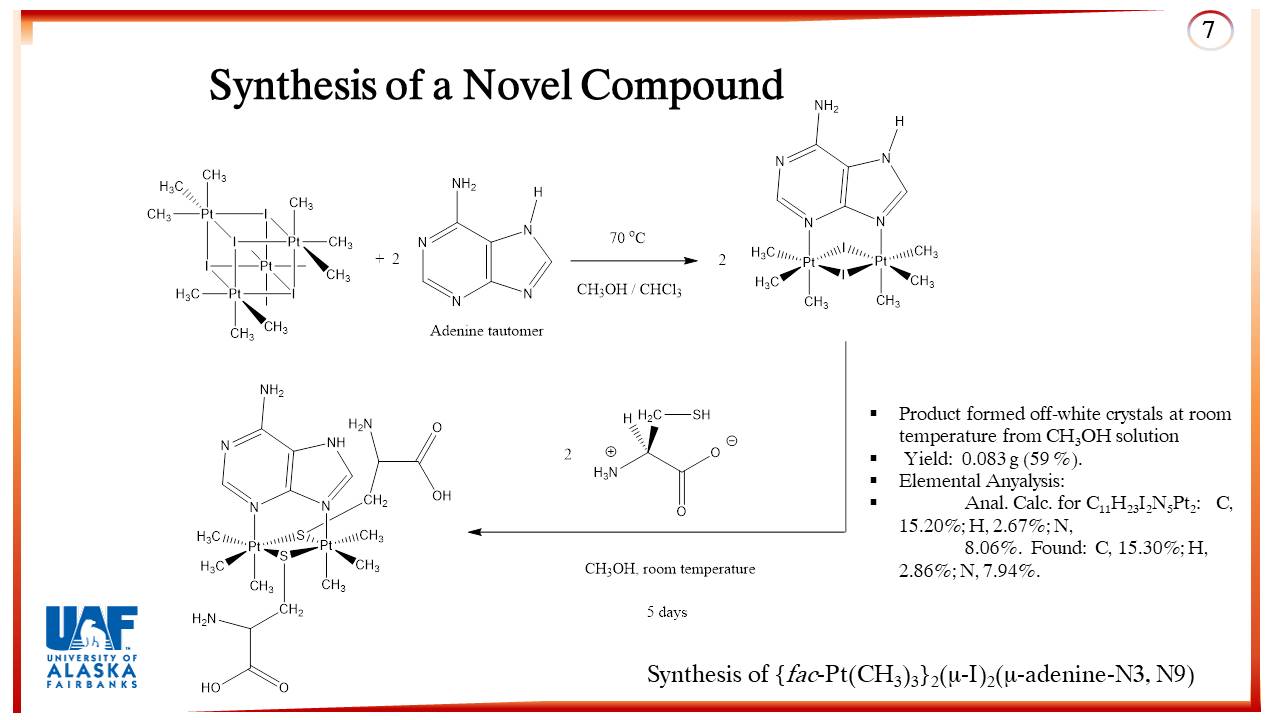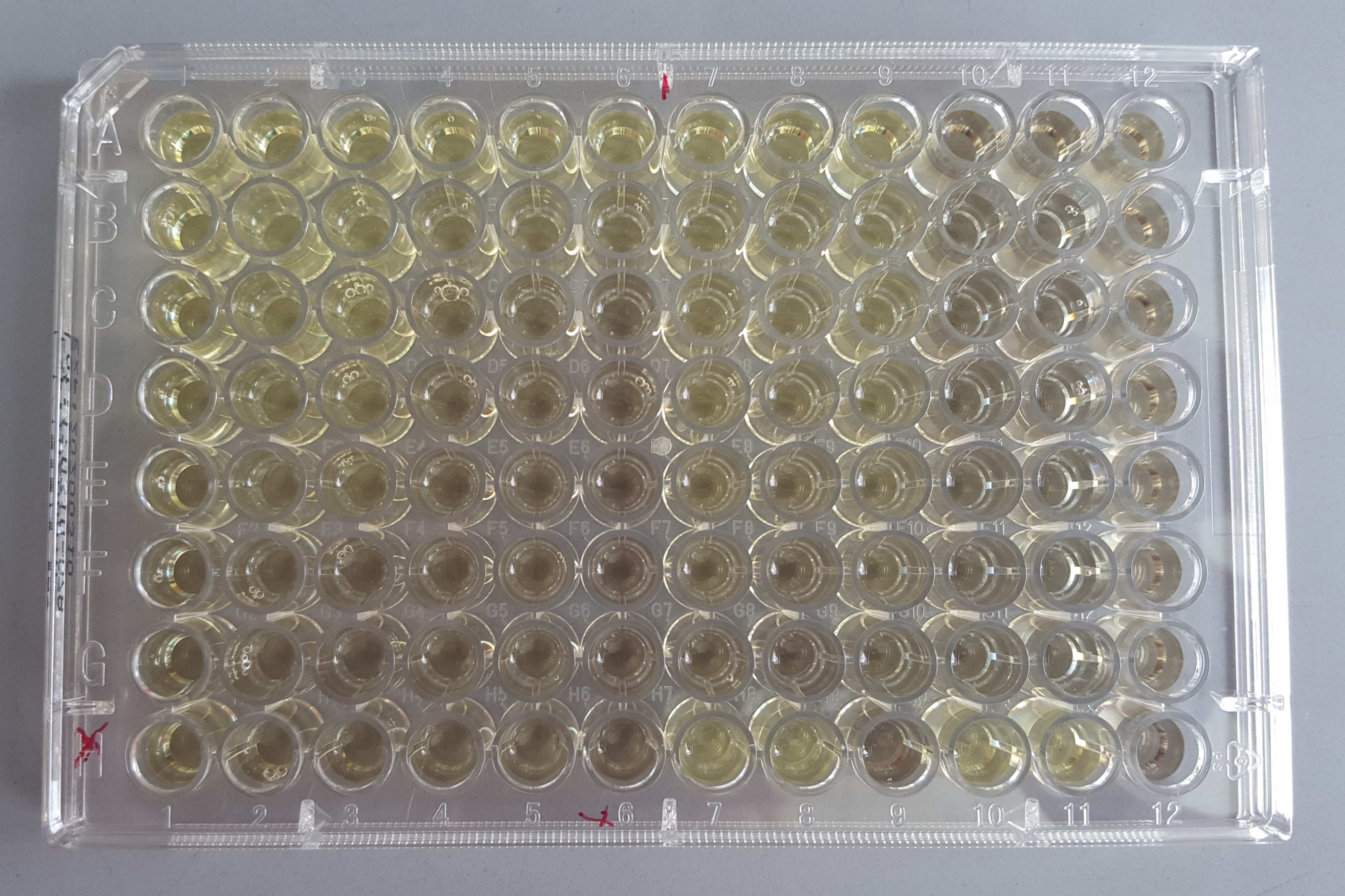chapter 1
Synthesis of a Novel Compound
First introduction to undergrad
research: Inorganic chemistry laboratory, synthesizing
novel anti-cancer Pt-based drugs; the starting
material for our synthesis was first prepared in 1830,
and my first task was to react this compound with
adenine – a nucleobase found in DNA; when combined,
these reagents showed an immediate reaction. Our
attempts to crystalise this compound did not prove
successful; however, using mass spectroscopy
techniques, we were able to derive its chemical
formula, and through NMR spectroscopy, indirectly
establish the relative position of the chemical bonds.


Figure 1.
Synthesis of the first compound I made in the
inorganic chemistry laboratory at UAF. Slide is from a
presentation I gave at the One Health conference
(formerly: UBARC) here in Fairbanks, Alaska.
We hypothesised that these compounds would be more effective and bind to DNA in a similar mechanism to that of cisplatin.
When we switched to the testing phase of the Pt-compounds, I was looking down a microscope at cancer cells.
I need to keep them alive long enough to kill them, with an assay that is based in colour. Calorimetry is a way to determine the concentration of coloured compounds in solution.

Image: MTT assay colour variations across wells; the darker purple indicates wells that have healthy cells
When cells die, it can be a programed cell death (apoptosis), and this means the cell has exhausted all other paths to repair DNA damage. If cells die without programing their death, they have died due to necrosis.
